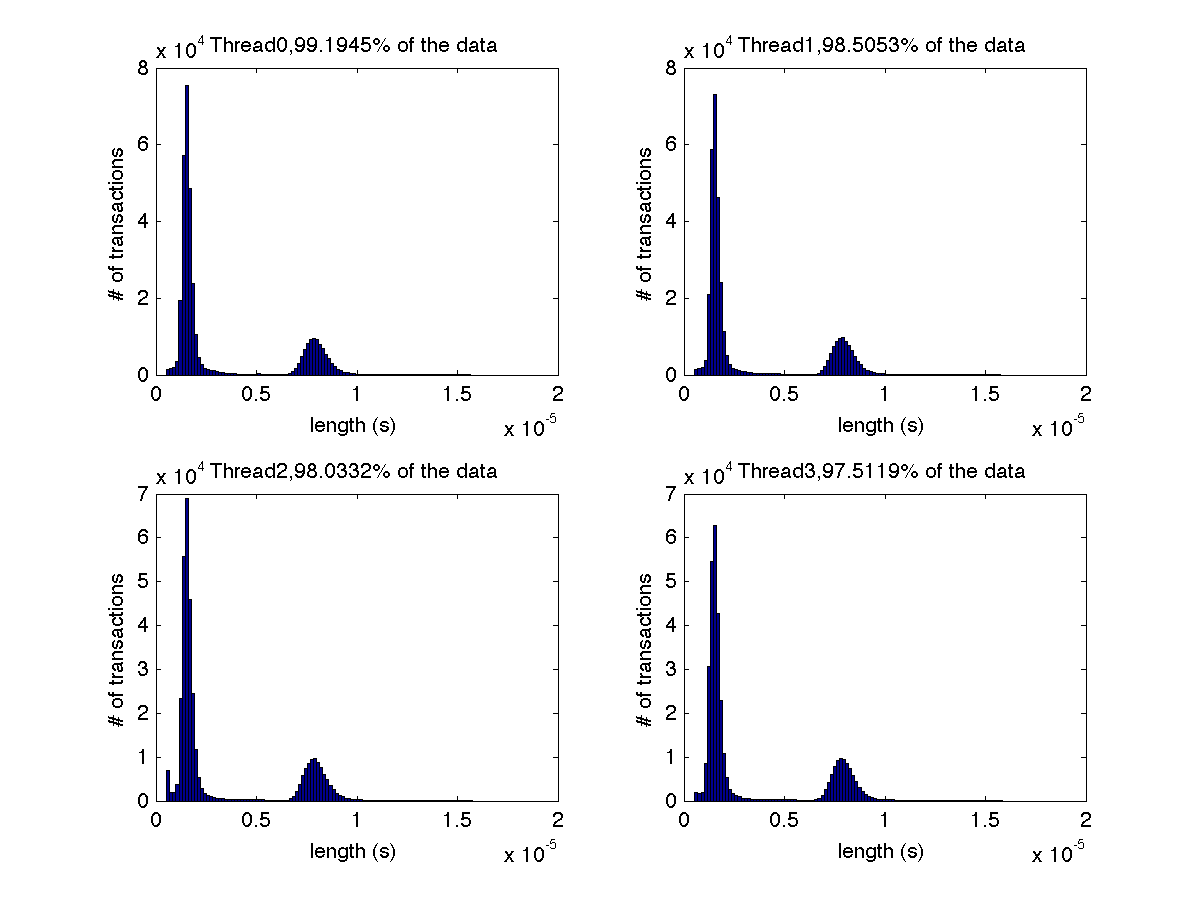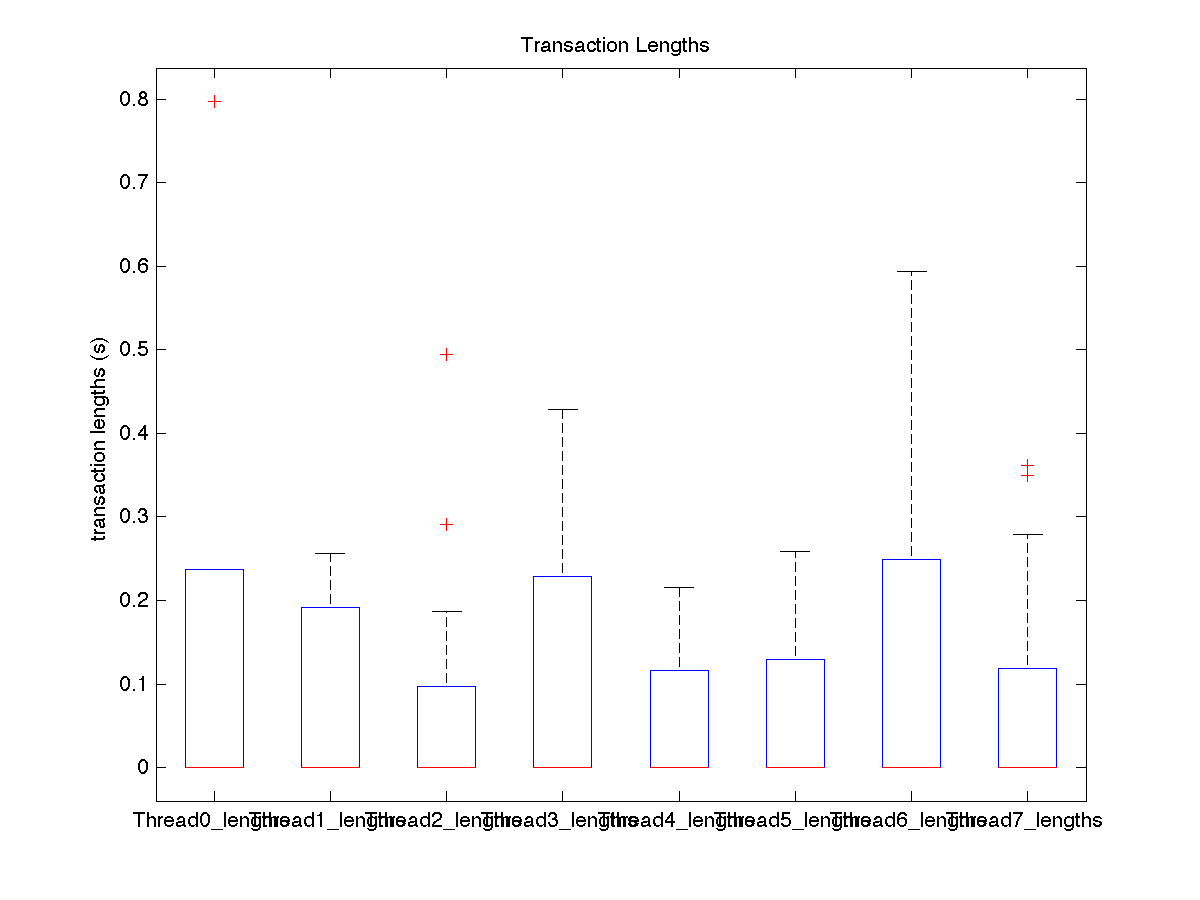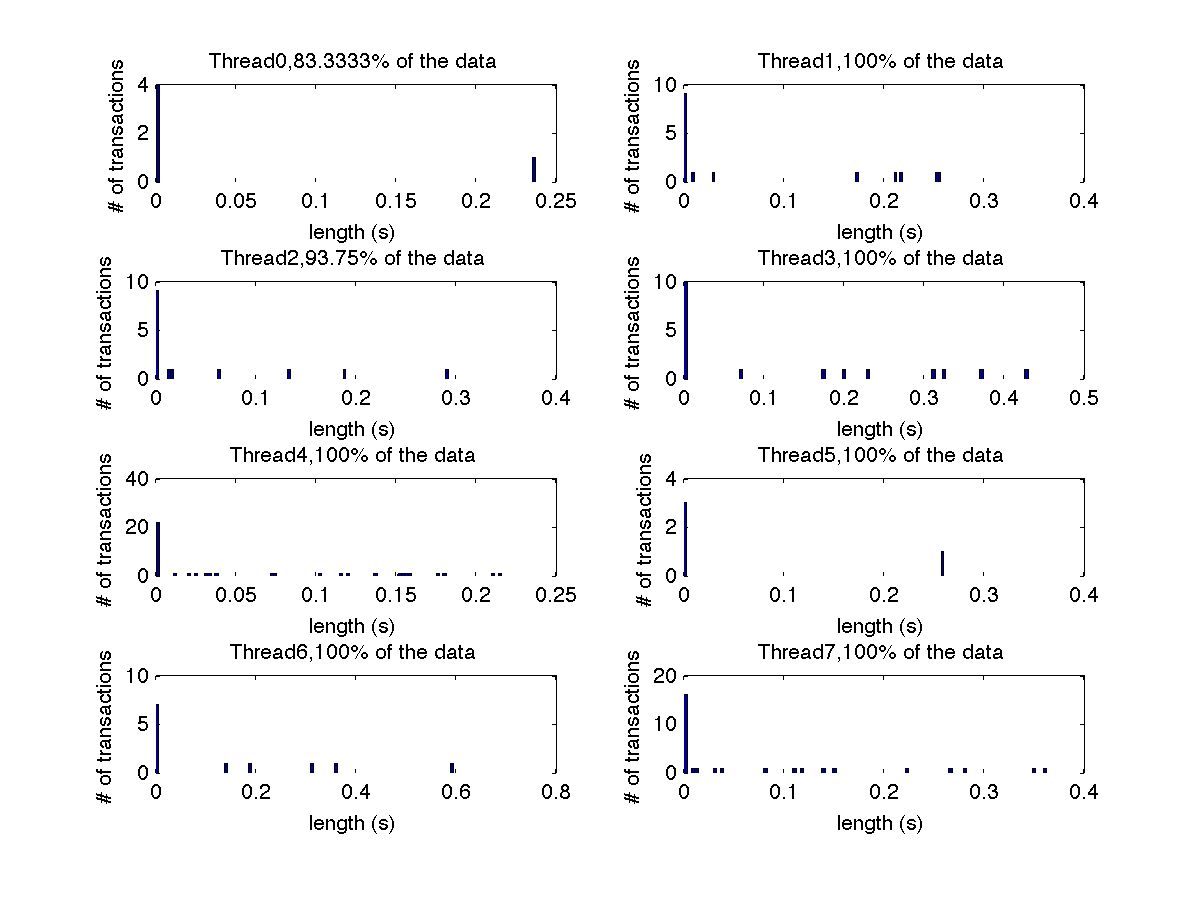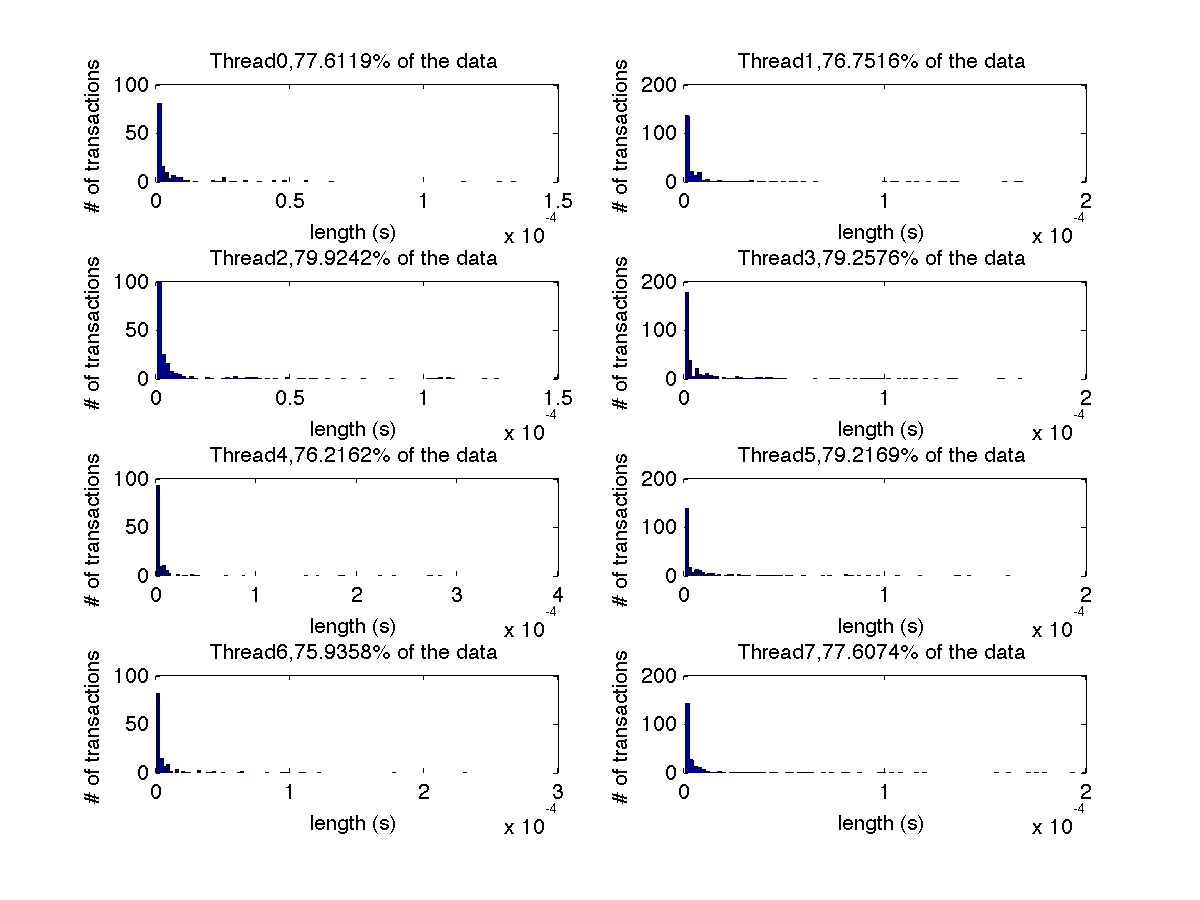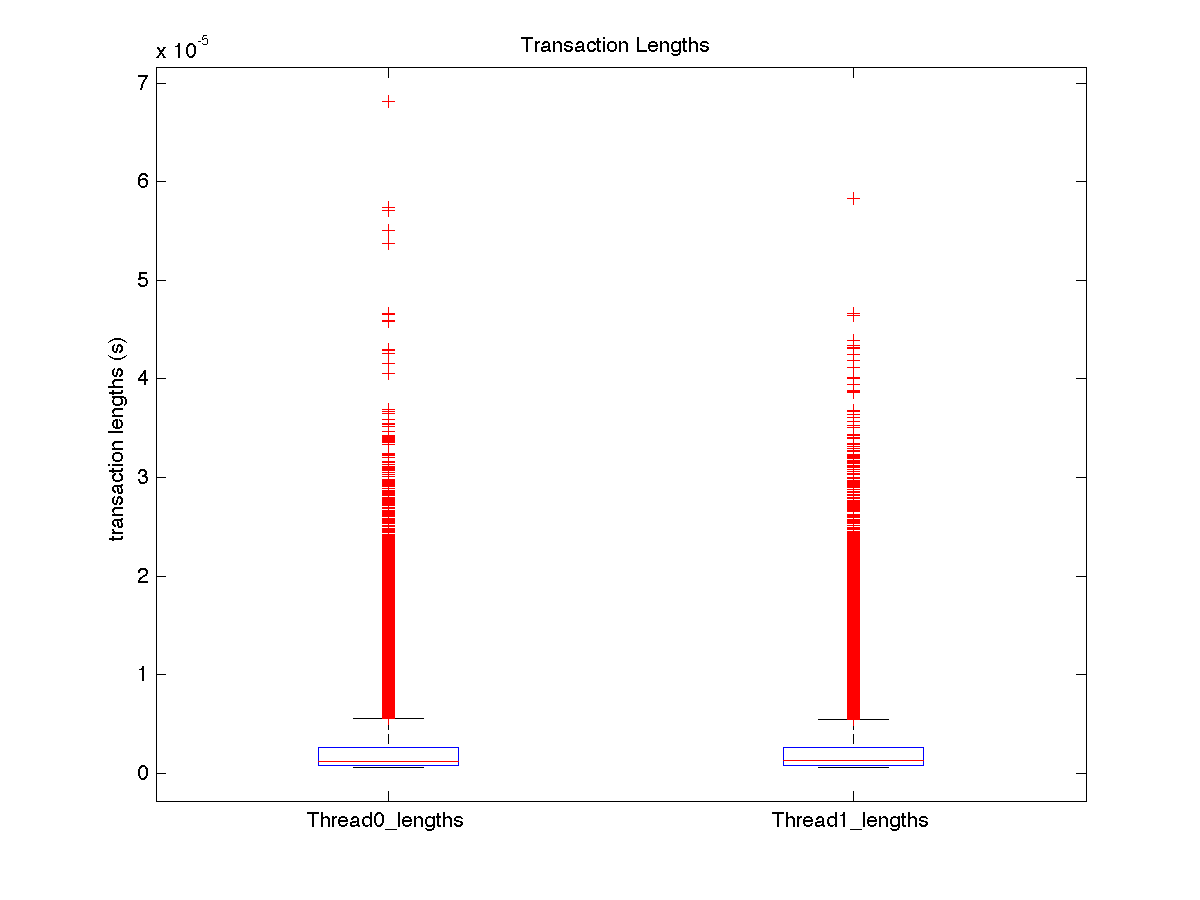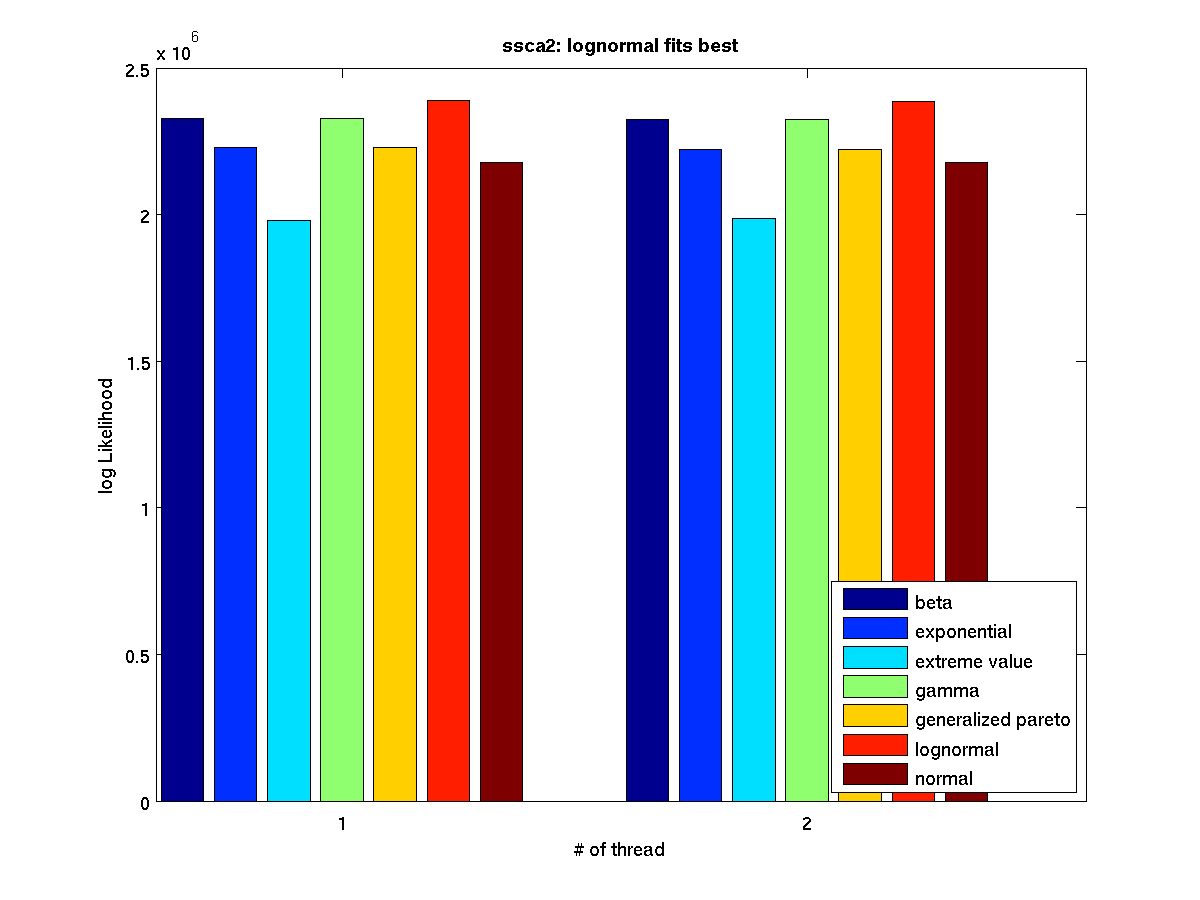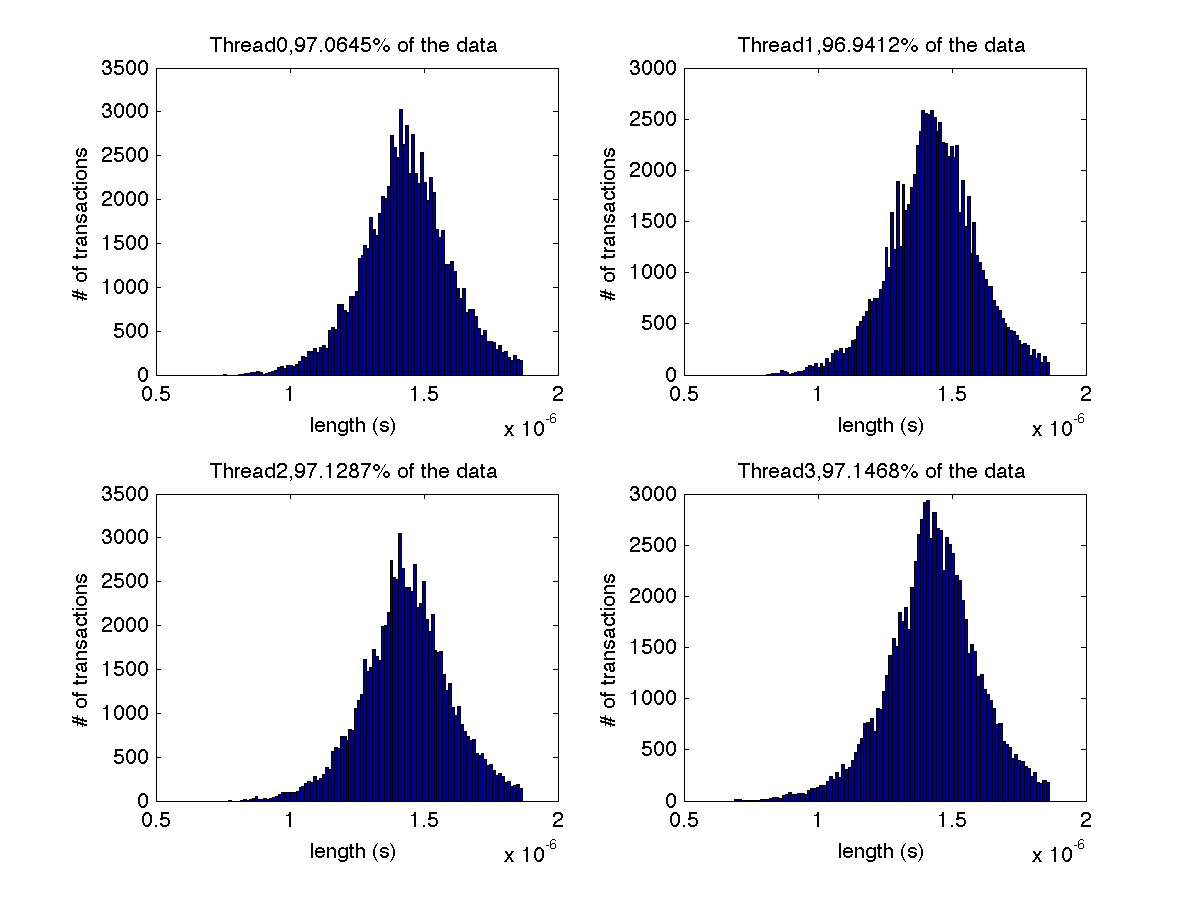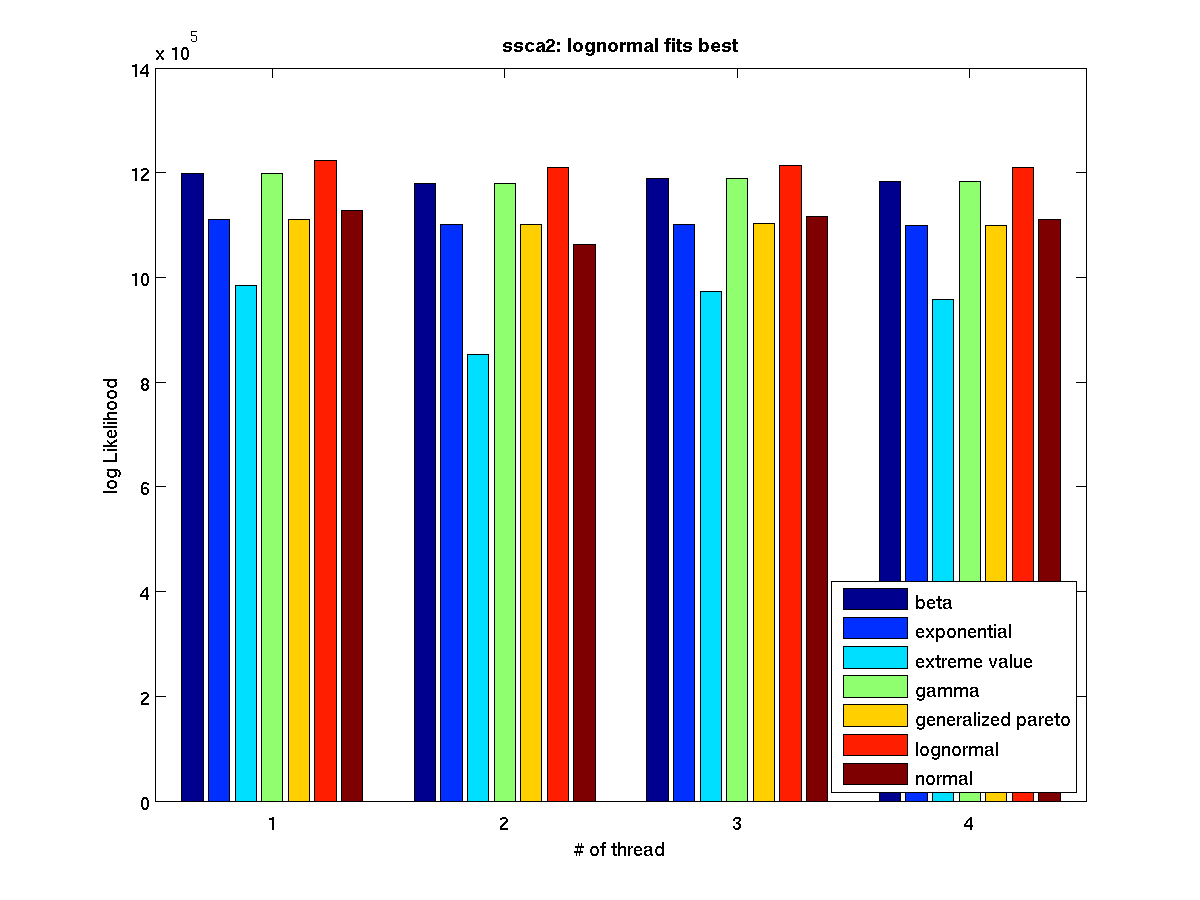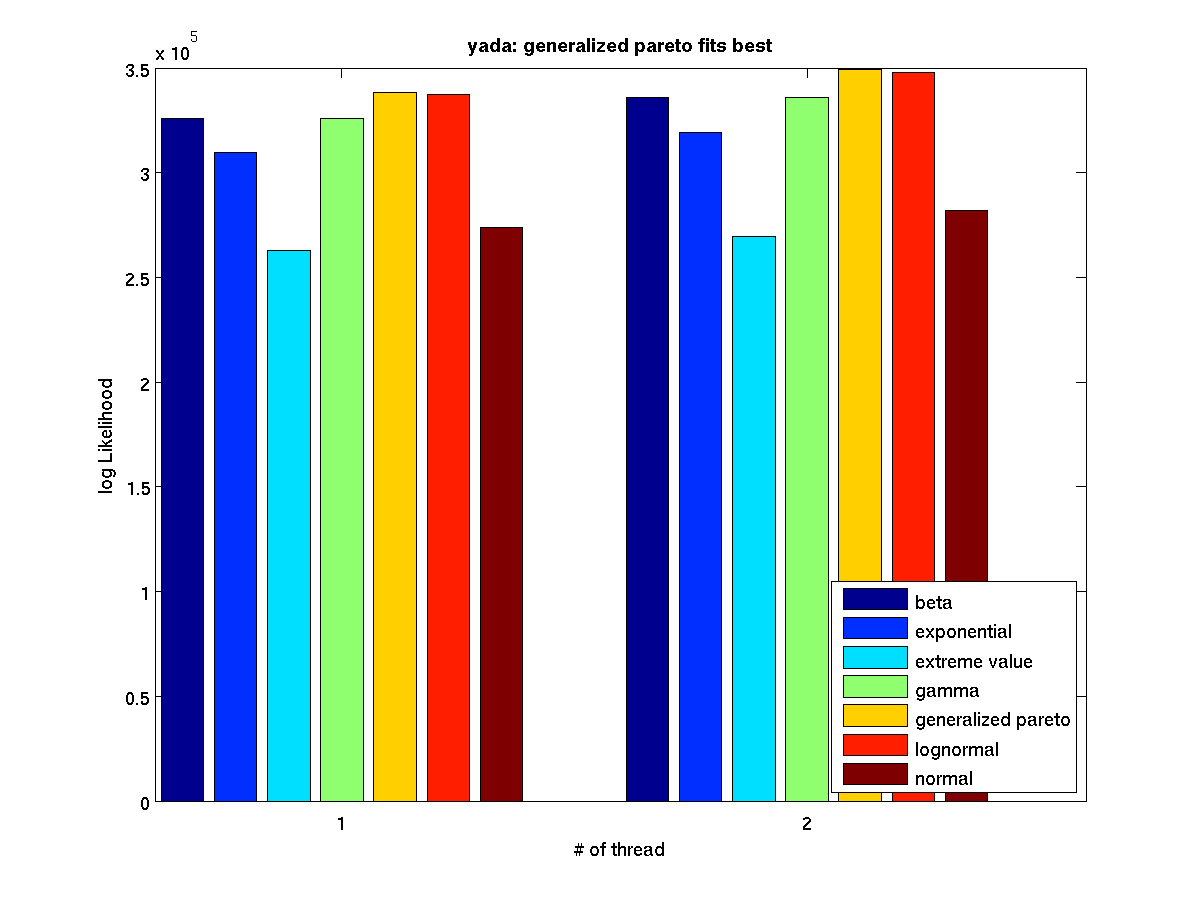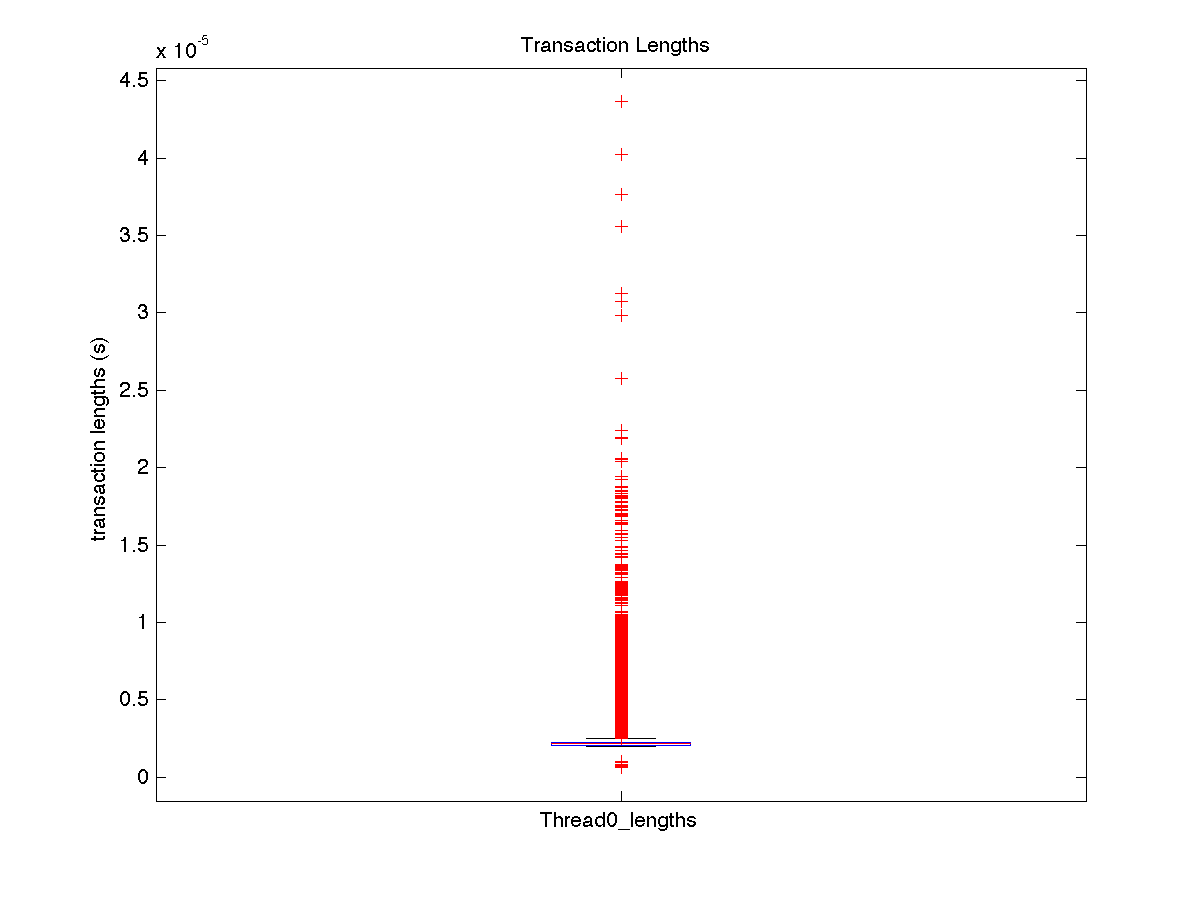 |
 |
 |
| Low contention - Boxplot of entire distribution for 1 thread |
Low contention - Histogram showing majority lengths of transactions for 1 thread (exact percentage in title of graph) |
Low contention - Bar graph of log-likelihood values for 1 thread |
| |
 |
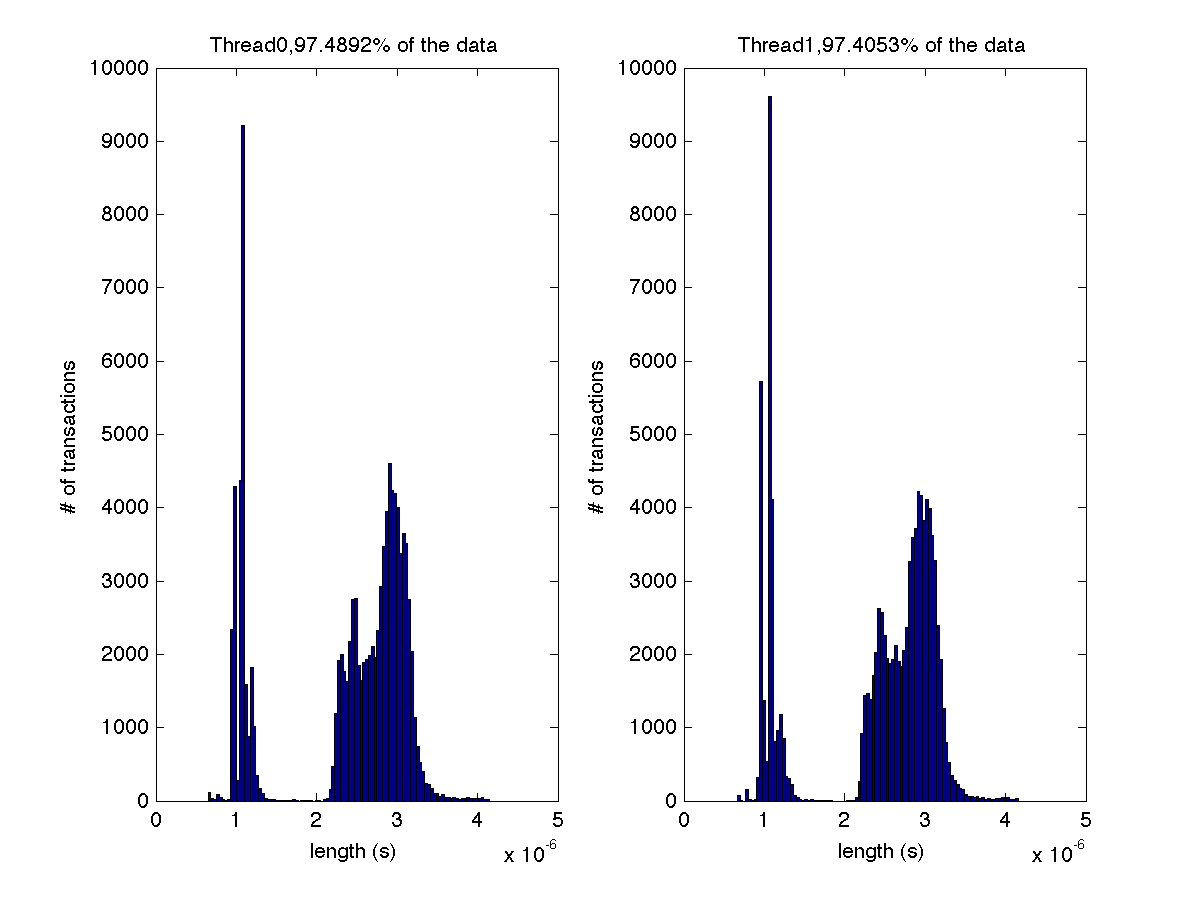 |
 |
| Low contention - Boxplot of entire distribution for 2 threads |
Low contention - Histogram showing majority lengths of transactions for 2 threads (exact percentages in title of graph) |
Low contention - Bar graph of log-likelihood valules for 2 threads |
| |
 |
 |
 |
| Low contention - Boxplot of entire distribution for 4 threads |
Low contention - Histogram showing majority lengths of transactions for 4 threads (exact percentages in title of graph) |
Low contention - Bar graph of log-likelihood valules for 4 threads |
| |
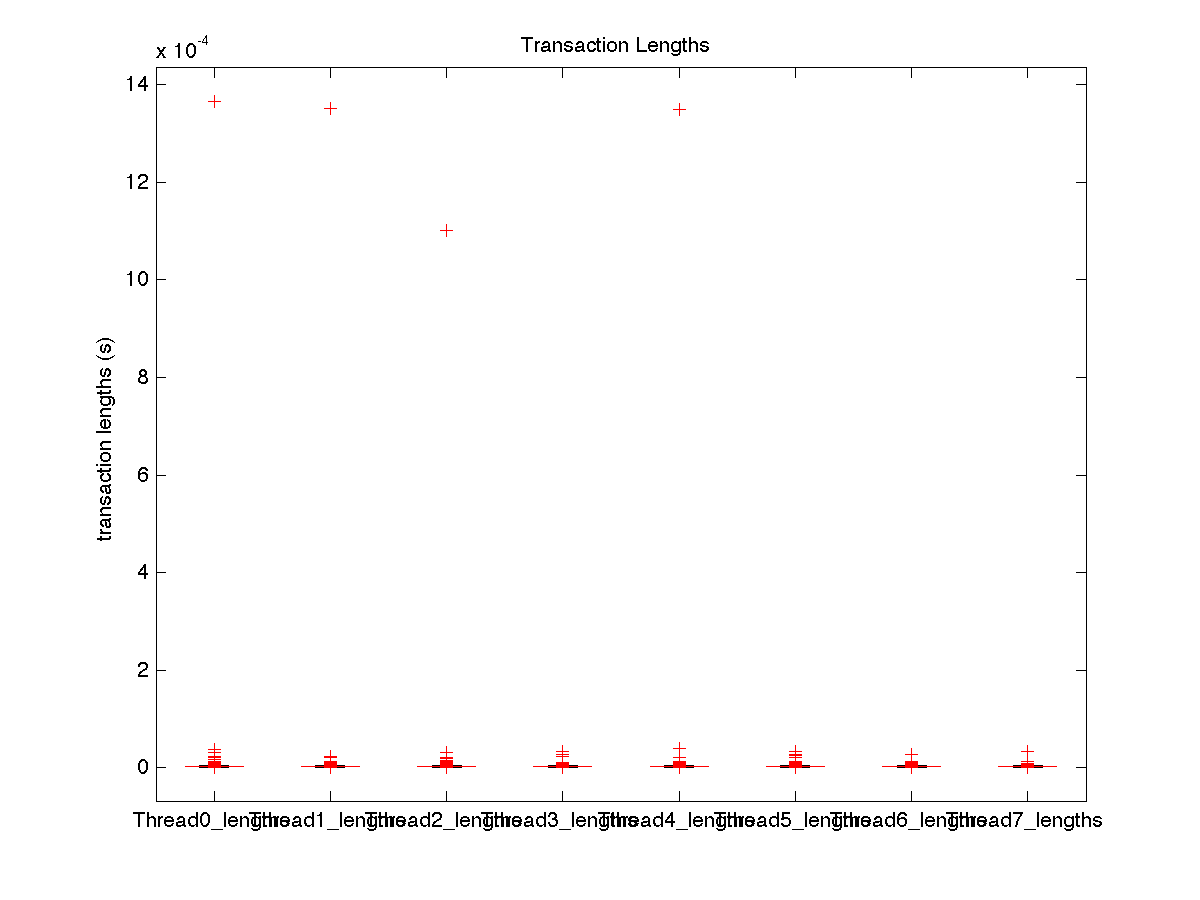 |
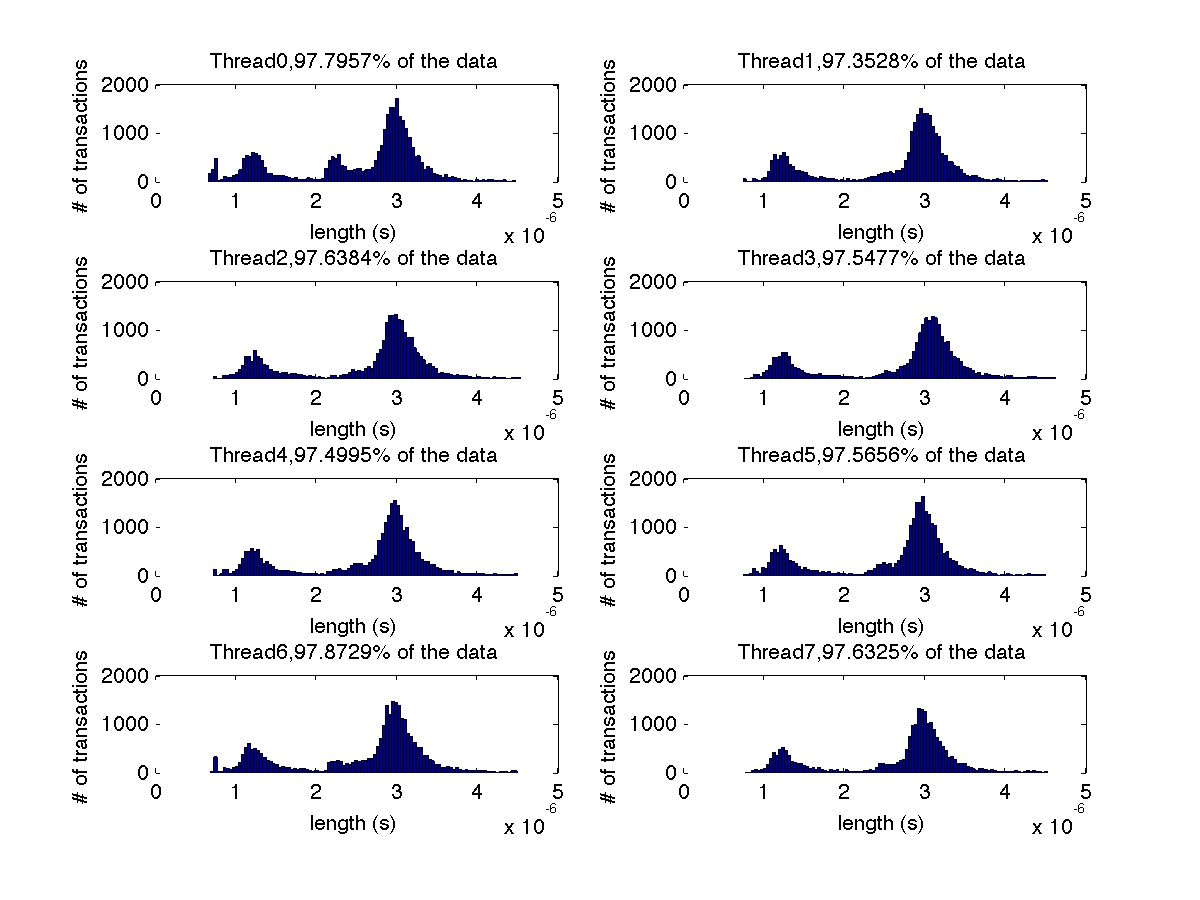 |
 |
| Low contention - Boxplot of entire distribution for 8 threads |
Low contention - Histogram showing majority lengths of transactions for 8 threads (exact percentages in title of graph) |
Low contention - Bar graph of log-likelihood valules for 8 threads |
| |
 |
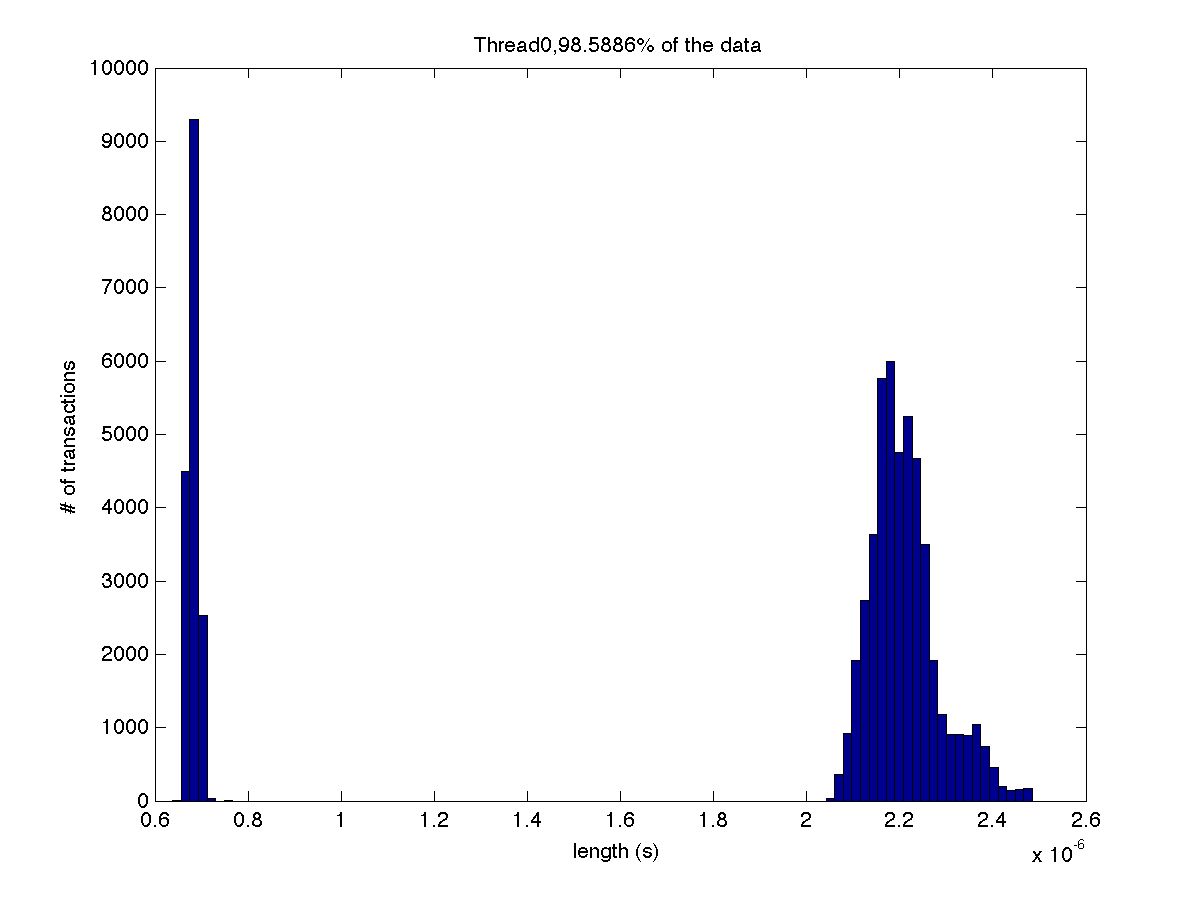 |
 |
| High contention - Boxplot of entire distribution for 1 thread |
High contention - Histogram showing majority lengths of transactions for 1 thread (exact percentage in title of graph) |
High contention - Bar graph of log-likelihood values for 1 thread |
| |
 |
 |
 |
| High contention - Boxplot of entire distribution for 2 threads |
High contention - Histogram showing majority lengths of transactions for 2 threads (exact percentages in title of graph) |
High contention - Bar graph of log-likelihood valules for 2 threads |
| |
 |
 |
 |
| High contention - Boxplot of entire distribution for 4 threads |
High contention - Histogram showing majority lengths of transactions for 4 threads (exact percentages in title of graph) |
High contention - Bar graph of log-likelihood valules for 4 threads |
| |
 |
 |
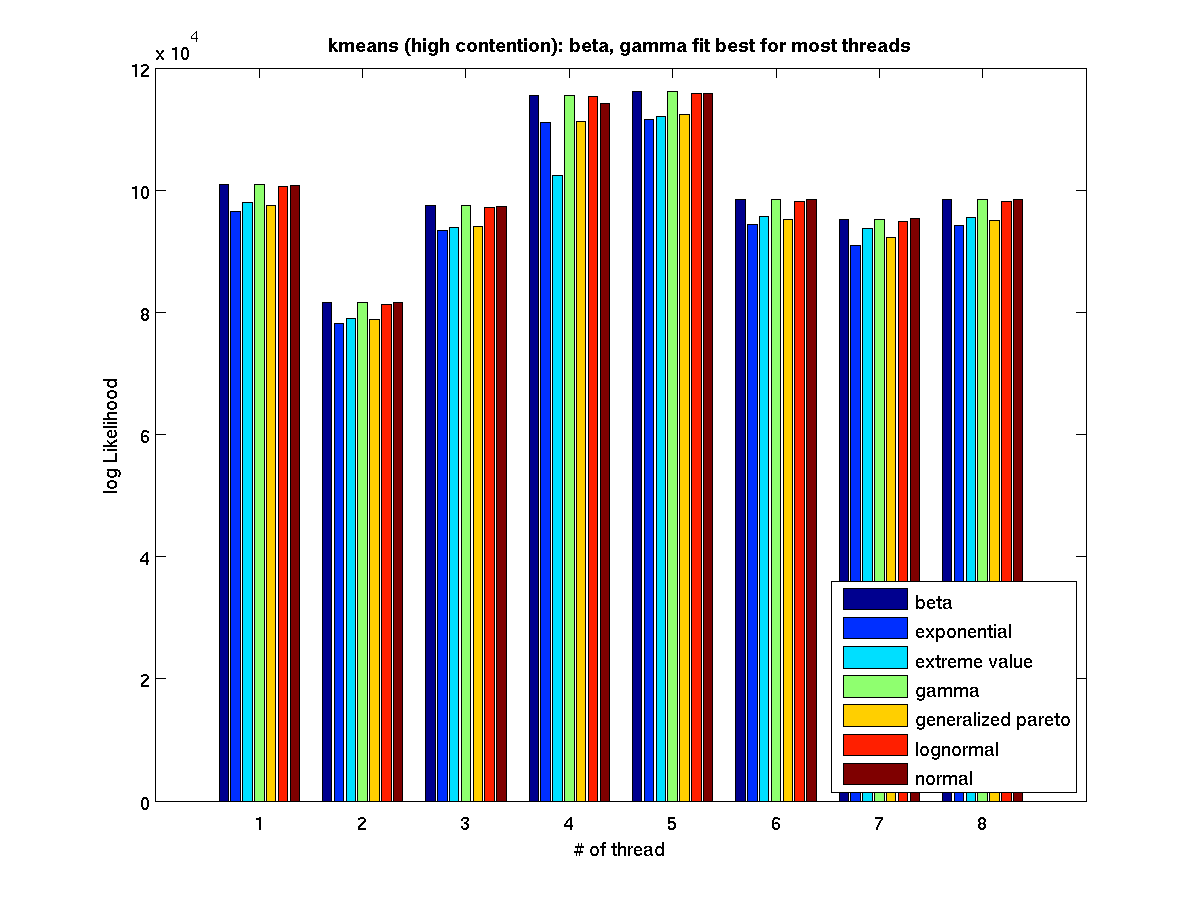 |
| High contention - Boxplot of entire distribution for 8 threads |
High contention - Histogram showing majority lengths of transactions for 8 threads (exact percentages in title of graph) |
High contention - Bar graph of log-likelihood valules for 8 threads |
| |







